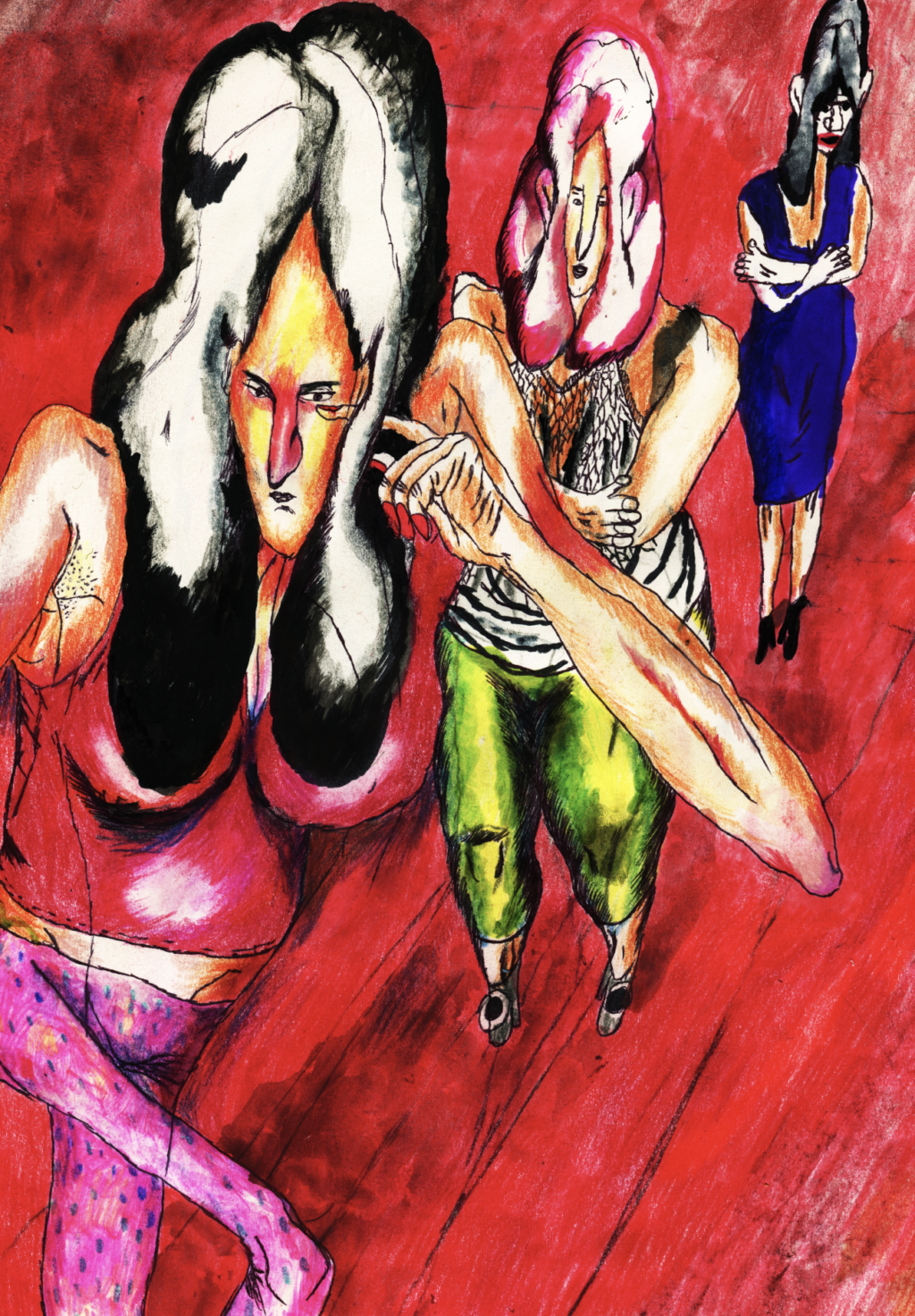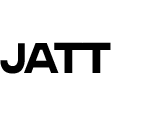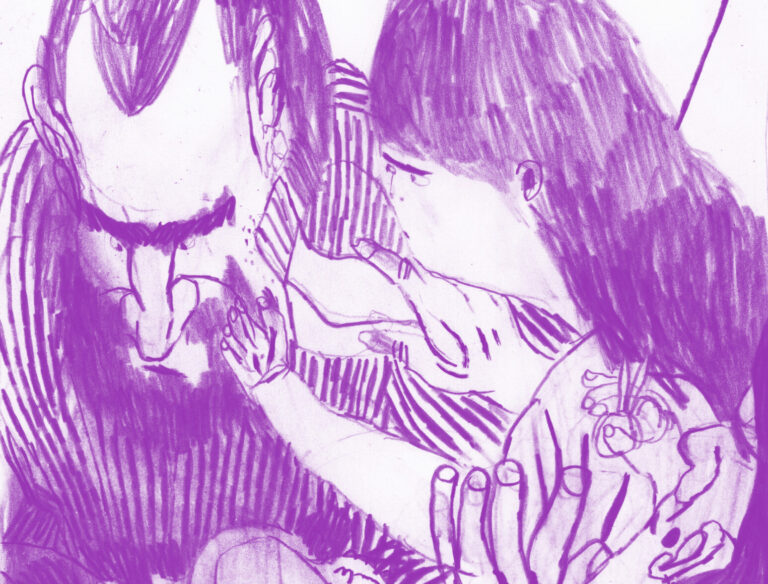Once a month, we give the floor to young artists in the form of an interview. The purpose of this format is to provide young artists with a space for discussion and sharing their creations, as well as to introduce the public to their journeys and artistic approaches. For this first interview, we had the pleasure of conversing with José Jun Martinez, a painter originally from Puerto Rico and currently a student at the Royal College of Art in London.
First of all, could you briefly introduce yourself?
Hi, I’m Elisa, a Roman drawer based in London.
You are currently at the Royal College of Art in Visual Communication. What motivated you to apply to this school? What has it done for you in terms of your work, your creative process and your research?
In my BA I spent a lot of time just focusing on my drawing. I had created and curated a few publications, battling with the limits of my poor graphic design skills. I wanted to go to RCA in order to develop those more although now that I’m here I feel immersed in a cauldron of different visual practices that very often step out from the printed matter. In general, I can say I’ve been thinking less about my drawing and more about how I could translate it into objects and what other forms can storytelling assume.
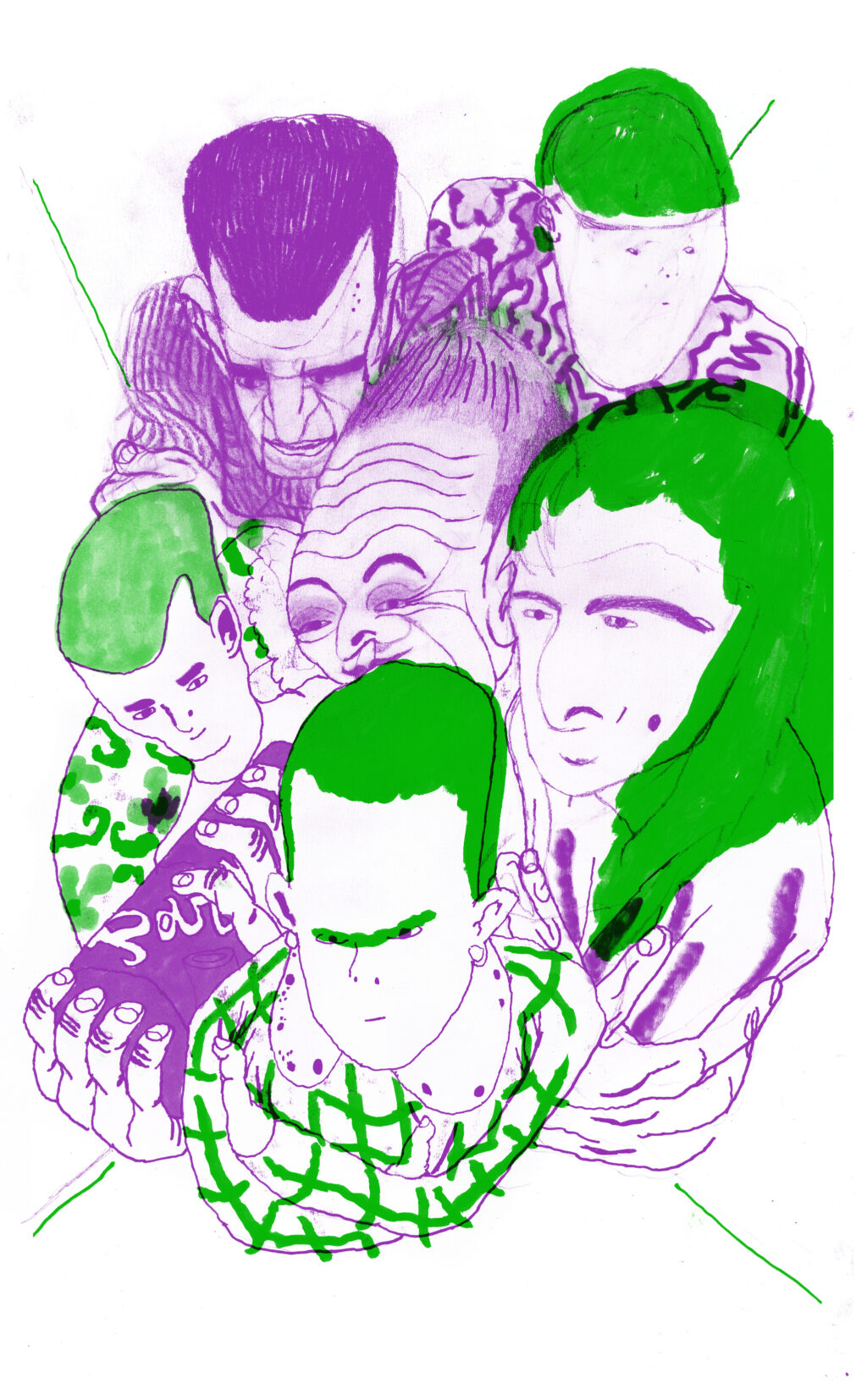
You grew up in Rome, a city known for its strong artistic background, has this influenced you in some way?
I think so, yes! Maybe growing up there is also one of the reasons why in my work I like playing with history.
Before that, you did your undergrad at Camberwell in London. What are the differences in teaching between the two institutions?
I think there are actually many similarities between the two courses because in Camberwell they have a very broad conception of what illustration can be. We were encouraged to draw by our tutors and among us students there was this shared aspiration towards finding a “style”, but at the same time we also had the freedom to use whatever medium or visual practice we thought would have worked best for the brief.
You have worked for magazines before such as “It’s Freezing in L.A!” Can you tell us about that? How was the experience of working with publishers?
I really enjoy editorial illustration and I especially liked working for IFLA! I think that illustrating articles and short stories is at the same time an unnerving exercise and a very exciting one. You are in a place that is in between the translation of a story and the invention of a new one.
What are your current references? And which ones have had a major impact on you?
I think that also because of Instagram there are many and ever changing illustrators or artists that I love seeing the work of and that I absorb a little bit of more or less consciously. Right now I love Wilfrid Wood, Malwine Strauss, Livia de Magistris, John Molesworth, Brecht Evans, Sarah Mazzetti… and many others! There’s also plenty of artists and authors that I could say have been important for my growth for different reasons, especially those that were somehow part of my childhood. If I were to name a few I would say Picasso, Giorgio Morandi, Emanuele Luzzati, Quino, Schultz, Quentin Blake, Andrea Pazienza, Goscinny & Uderzo…
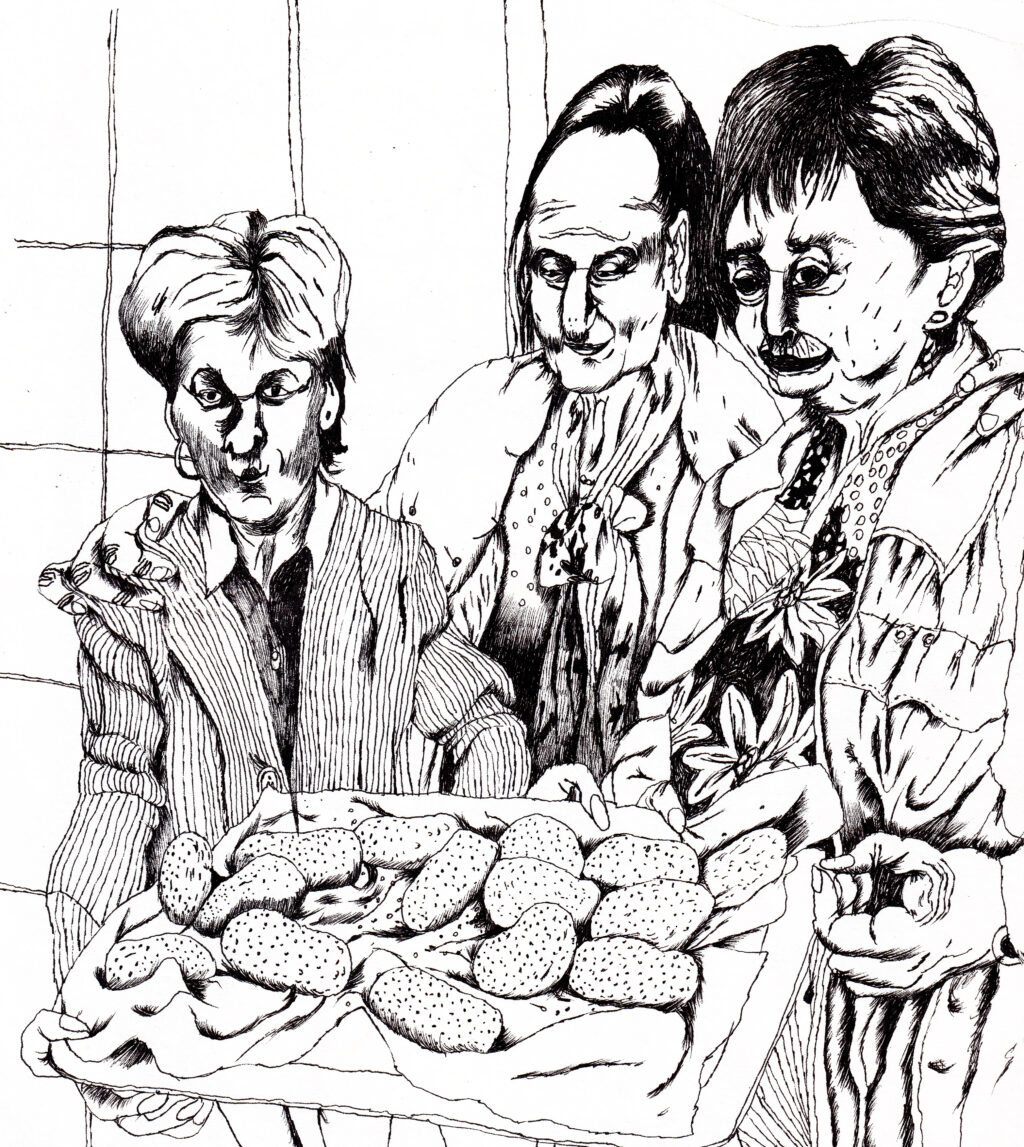
What subjects/themes do you tackle in your work?
I think that recently a lot of my work revolves around play, language and parafiction.
Can you describe your work in three words?
I would say that it’s instinctive, playful and sometimes a bit dark.
What are the main mediums/materials you use for your work, and why?
My favourites are graphite pencils and pens. I like to take some time to step into every drawing, especially when it’s a commission. Working with a combination of both allows me to plan, research, erase, be a bit dirty whilst keeping the focus and the essence of what I want to say. Then, if I decide that it’s better to use another medium, I abandon them, but I always plan with pencils and pen and I think that all the storyboarding and sketching part almost all the time ends up having something more to it than the final, refinished outcome.
I noticed that you often tend to change your medium, from marker, pen, to coloured crayons, what motivates you to change the medium? How does your relationship change?
For a long time I used to just spend a lot of time on one medium at a time, only moving to the next when I felt nothing new was coming out of it. Then at some point last year I decided to try many techniques at the same time and I made a collection book of drawings of children as a sort of exercise in style. What pushed me to change mediums was the fact I wanted to find some freedom and freshness, or maybe my voice, in each of them. From then on, I’ve been feeling less stuck in one technique and more able to switch, even if I’m not super technically competent in all of them. But incompetence can also become a different language. For example, I think that I turn to mediums I’m less confident with when I want to work quickly and I want my drawing to look a bit stiff, rigid or simple.
Your work at the moment is very much centred on human relationships and food. Why is this of particular interest to you?
I don’t know how to answer precisely, but generally speaking I think my work has always revolved around people and that conversations and relationships have always been the thing that captured me in books and movies. Lately I’ve been asking myself a lot of what if’s and when many people (and oftentimes food) are involved, and maybe they are all together in a very small place the answer becomes more interesting to explore.
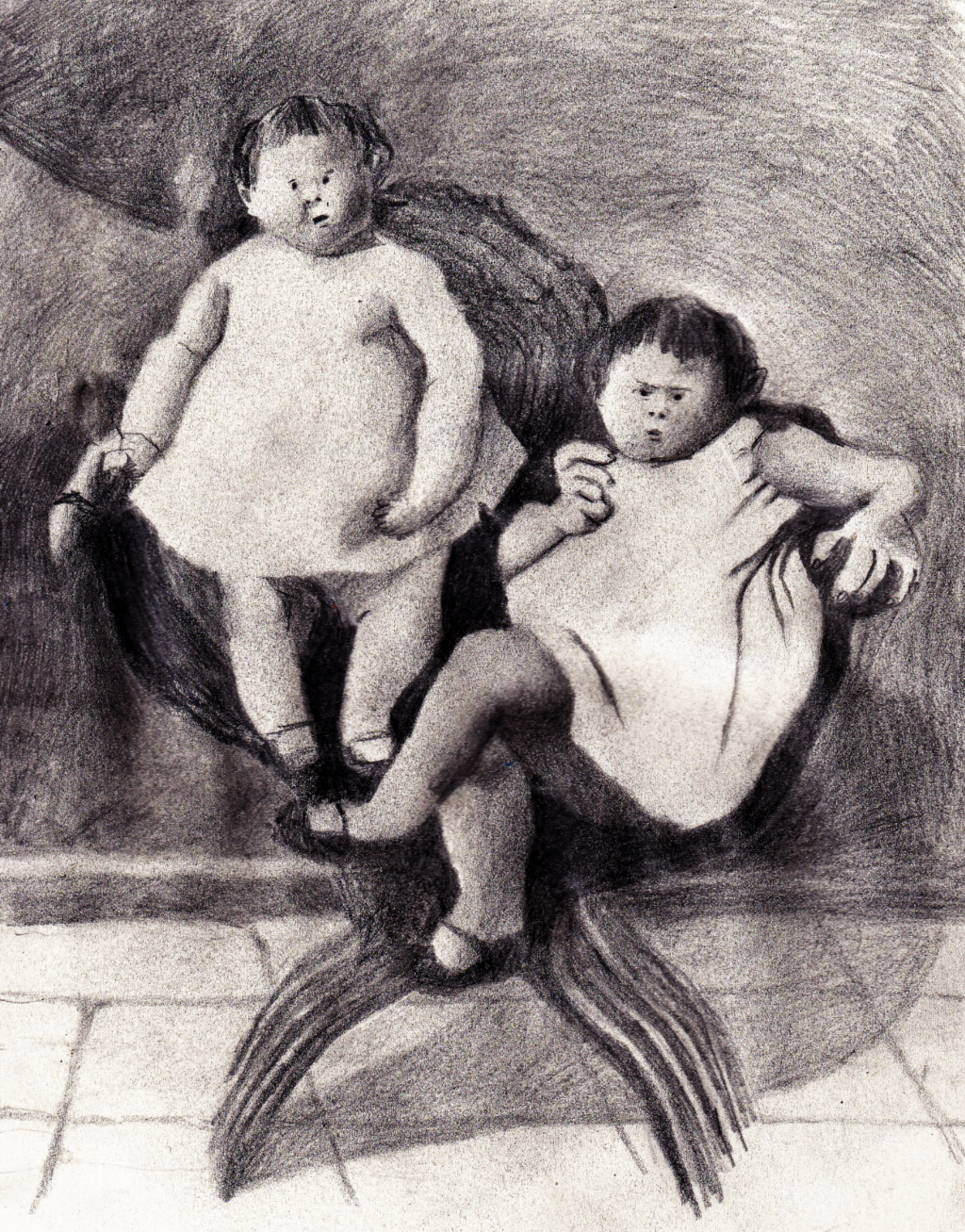
How do you visually report these moments of life through your drawings?
I‘ve always drawn a lot from life, especially in urban spaces packed with people or while sitting at the table. Now that I’m working more from imagination I probably still refer to this mental archive and I try to look at it from new points of view.
You play a lot with breaking perspectives in your work, to the point where the people you draw are becoming caricatured, distorted. Do you enjoy this, and what interests you in that?
I like to see the people I draw transforming as I go and I think playing with perspective allows you to get this kind of surprise effect, because you still want to make it work, even if it’s warped, and the character you’re drawing works its way in this research.
Do you have a special relationship with food? Do you have a story to tell?
When I was in kindergarten the cooks in my school would say “God bless her” to my mum because I would always get three servings of everything. One of the very few things I remember I really disliked eating when I was a kid was a sort of cocoa spaghetti with a hog sauce and I remember this disgust as an event. Of course, preparing food and sharing it is also a big part of Italian culture. A lot of fights in the Tuscan side of my family sparked from someone daring to try and replicate someone else’s signature dish. This would often lead to them failing, being publicly humiliated for it, not accepting the defeat, attacking their culinary rival.
How are you doing so far with your freelance work? Any recommendations?
Right now I think I enjoy the commissions I’m getting because they are quite varied. Sometimes it’s a poster, an illustration for an article or a short story or comic spread. Most of them come from people that found my work through instagram so I would say post! If you are comfortable doing so, show how many forms your work can take and don’t think about having too much about having a consistent style.
What do you see as the most challenging difficulty as a young artist?
Repaying your loan to the British government, maybe!

How would you like to see your practice evolve, both technically and in terms of the subjects you tackle?
In terms of drawing, I would really like to make a long comic and an animation, at some point. I really enjoy reading journalistic/travel comics like Joe Sacco’s and Guy Delisle’s and I always wanted to work on visual reportages as well.
Are there any new practices you’d like to move towards?
For the near future I was planning to make some objects! I’m interested in sculpture but also a lot in jewellery and in trying out metal but at the moment I’m just playing with this probably toxic air drying foam clay that gives a lot of satisfaction.
What would you like people to feel and remember about your work?
I would like people to find it funny and feel uplifted but maybe also slightly upset by it. When I was a kid, the best pictures were the ones that didn’t suffocate me in trying to communicate something, so I would like my drawings to leave some space for the viewer’s own imaginative elaboration.
How do you see the art market/ art business? Is it something that interests you? How would you explain your relationship with this field?
I don’t think we have a relationship and I don’t feel particularly drawn by it, at least at the moment. I’m interested in curation but not very much in exhibiting my work as a piece of fine art.
Do you listen to music while you produce? If so, could you give us a top 5 list of the tracks you listen to over and over again in your studio?
I do! I’m listening to Mahmood’s Tuta Gold, Music For Models’ Killing Paul Allen, Don’t turn around by Ace of Base, Dancing in the Dark by Bruce Springsteen, Starry Nights by Peggy Gou, Contaminado by La Femme.
